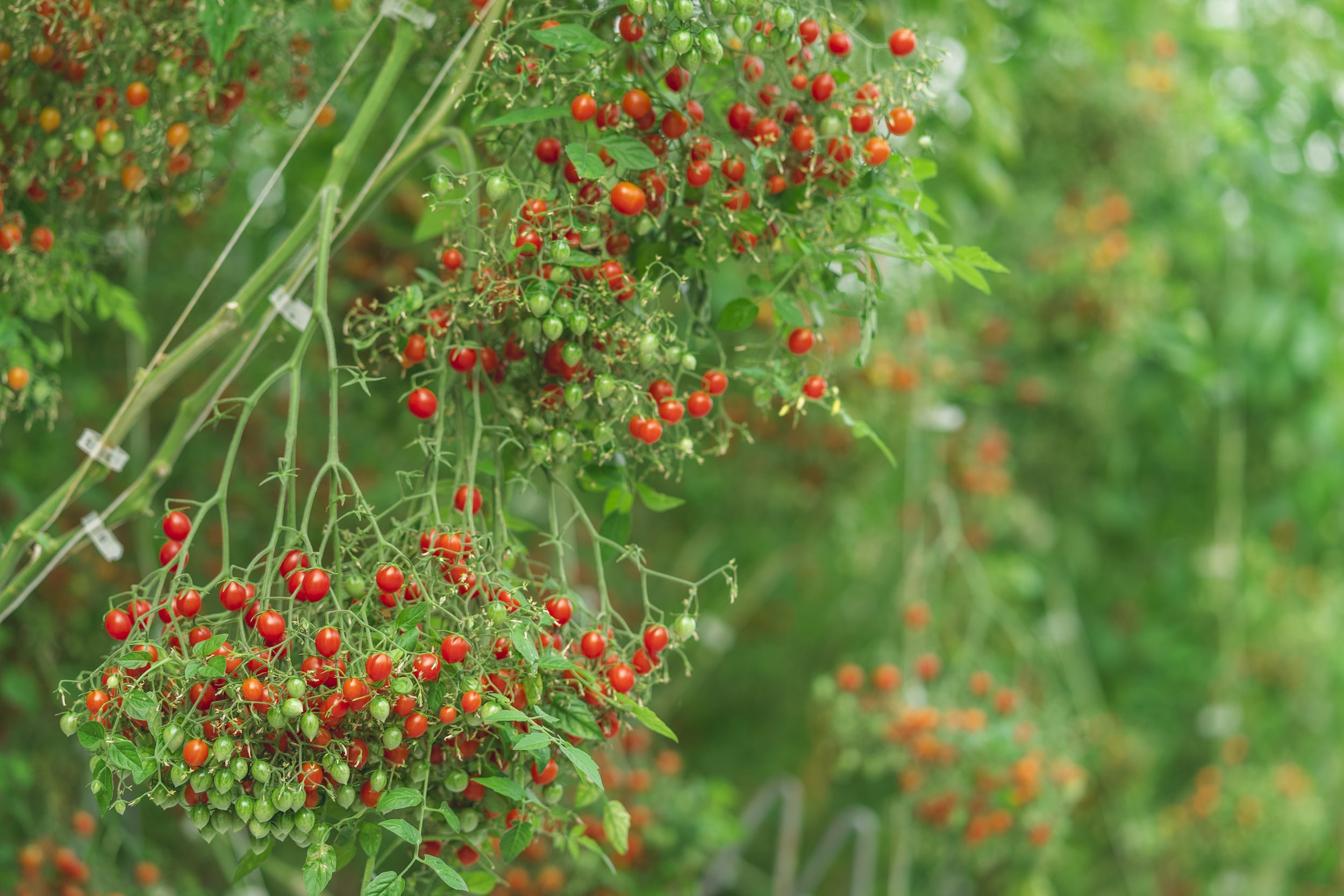



Article by: Hari Yellina
c “It’s obvious that customers adore this product. I can tell that the chefs adore using this in their meals, so I believe it has potential “said Henry Liu, general manager of P’Petual. But what makes for a simple snack for consumers actually causes growers some inconvenience.
With over three decades of experience growing tomatoes, P’Petual’s chief grower Andrew Potter stated, “I’m always up for a challenge, and this is probably one of the tougher challenges.” The tomberry was created in the Netherlands by using traditional breeding methods to mix a little wild tomato with contemporary types. According to Mr. Potter, they require around 25% more attention than a typical tomato crop. “This variety is probably in its early stages of breeding, and it hasn’t really been perfected yet. Hopefully, new breeding will emerge over the next few years.” On a single bunch, the cultivar can yield up to 300 small tomatoes throughout the summer. The first difficulty is getting the fruit and blooms to promptly and evenly at the start.
As the plant matures, employees must continue to monitor all of the shoots it produces. Pests like spider mites and whiteflies can cause headaches as well. One of the greatest difficulties is how to pollinate a crop that generates so many blossoms. Bumblebees are used in greenhouses when tomberries are grown abroad, according to Andrew Potter. A tomberry crop traditionally requires roughly five times as many bumblebees as a truss tomato production. The problem in Australia is that there aren’t any bumblebees. For such a profuse crop, manual pollination wands, which are common in Australian greenhouses, are impractical.
In order to automate the procedure, the company is doing so. It has created a fan device that can autonomously go down the rows, blowing the flowers and dispersing pollen. The machine still needs to be pushed onto the tracks that go down each row by people. It is currently collaborating with Queensland University of Technology to put an end to that by placing a robotic platform under the pollinator that navigates the greenhouse on its own. Senior lecturer Chris Lehnart from QUT said, “Inside the platform, it’s got a suite of sensors, so it’s got a laser scanner and a camera.” “The robot’s ability to detect pipe rails and go from one rail to the next is an innovation.”
Tomberry cultivation is only half the battle. There are issues with picking and processing them as well. Fruit cannot be manually plucked since it would require too much labour. The harvest is instead done in complete bunches, which are then dried for two days. Because of this, when the bunches are connected to a shaking device, the fruit comes off more easily. Even yet, it’s not as easy as it seems. Henry Liu stated, “If you don’t dry properly, the skin will rip and form holes, and once the holes are made and moisture is introduced, it turns into mould.”
Working with local technologists, he has invested a lot of time and money in modifying equipment to fit the tomberry. “Stress sprang to mind first,” said electrical technician Enrico Polacchi. “It gets crushed in the machines, the skins are tender, and it’s really sensitive. Therefore, it’s not a simple operation. But Mr. Polacchi claims that they are almost there. “It’s coming together. We need to reach 100% since the balance is approximately 90%, he stated. You may be asking yourself if it’s all worth it with all the difficulties. The conclusion following two years of testing is: not yet. “We have no revenue. Actually, we lose money by doing this, Henry Liu stated. The reason I continue to plant this type is that I have the same results when I grow small cucumbers. Mini cucumbers were an experiment when Mr. Liu became interested in them. He is one of the people who now regularly uses them. And with tomberries already in high demand, he reckons despite the challenges, he is onto a winner. “Any new things are not supposed to go smoothly at the start,” he said. “So, I give it a go to try and figure out all those problems and find a solution.”